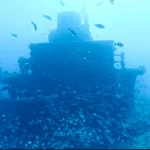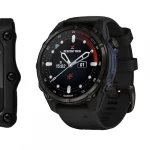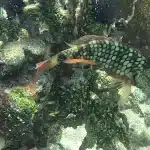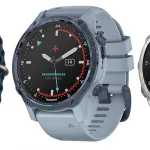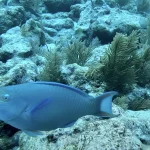Table of Contents
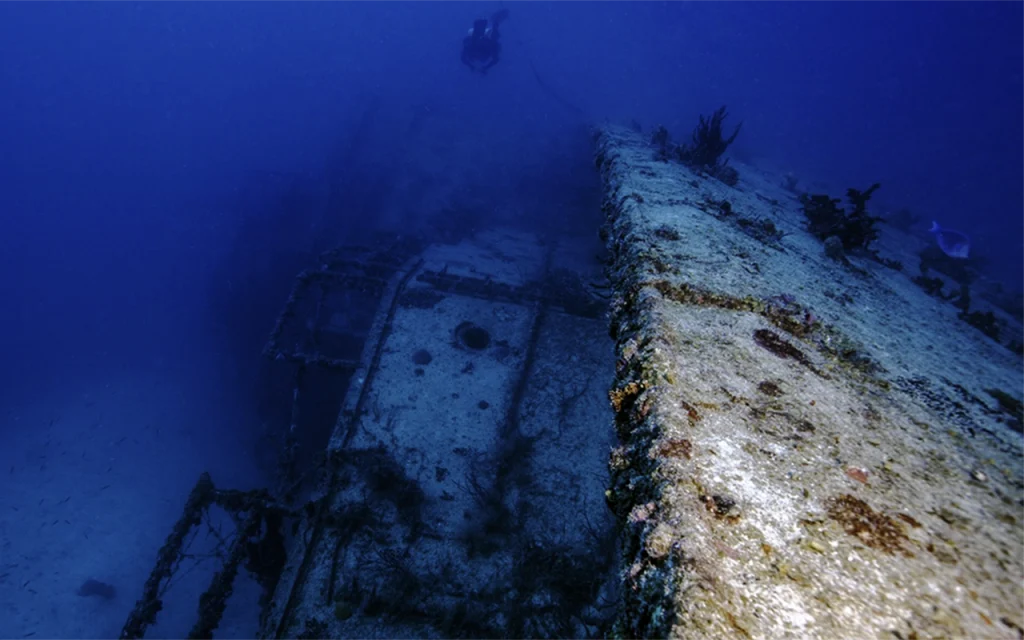
The USCG Bibb is praised for its pristine condition and marine life, it’s consistently described as a challenging dive site best suited for experienced divers who can handle the depth and strong currents.
Article at a Glance
- Historical Significance: The USCG Bibb, a Treasury-class Coast Guard cutter, was commissioned in 1937 and served in World War II, rescuing hundreds of survivors from torpedoed ships. It was decommissioned in 1985 and intentionally sunk in 1987 to create an artificial reef.
- Diving Depth and Conditions: The wreck lies at a depth of approximately 130 feet (40 meters) on its starboard side, presenting a challenging dive site suitable only for advanced divers due to strong currents and potential entanglement hazards.
- Unique Marine Life: Divers can encounter a variety of marine species, including bull sharks, barracuda, grouper, cobia, and sea turtles, making the Bibb a vibrant underwater ecosystem.
- Identifiable Features: Key historical features include the ship’s structure, propellers, crow’s nest (with a Jolly Roger flag), and potential remnants of gun emplacements, all contributing to its allure for divers.
- Safety Measures: Safety protocols include mandatory advanced certification, thorough dive briefings, mandatory safety stops, and the requirement to follow descent and ascent procedures along the anchor line.
- Dive Shops Offering Trips: Several dive shops in Key Largo provide trips to the USCG Bibb, including Rainbow Reef Dive Center, ScubaTech Key Largo, and Florida Keys Dive Center, among others.
- Exclusive Diving Experience: The Bibb’s challenging conditions, rich history, and diverse marine life make it a unique and rewarding dive site for experienced divers seeking adventure in the Florida Keys.
Shipwreck Location Coordinates and Depth
Depth
- The Bibb rests on its starboard (right) side at a depth of approximately 130 feet (40 meters)
- The port gunnel railing is at a depth of 95 feet (29 meters)
Location Coordinates
The USCG Bibb shipwreck is located off the coast of Key Largo in the Upper Florida Keys, with the following coordinates:
- Latitude: 24° 59.710′ N
- Longitude: 80° 22.770′ W
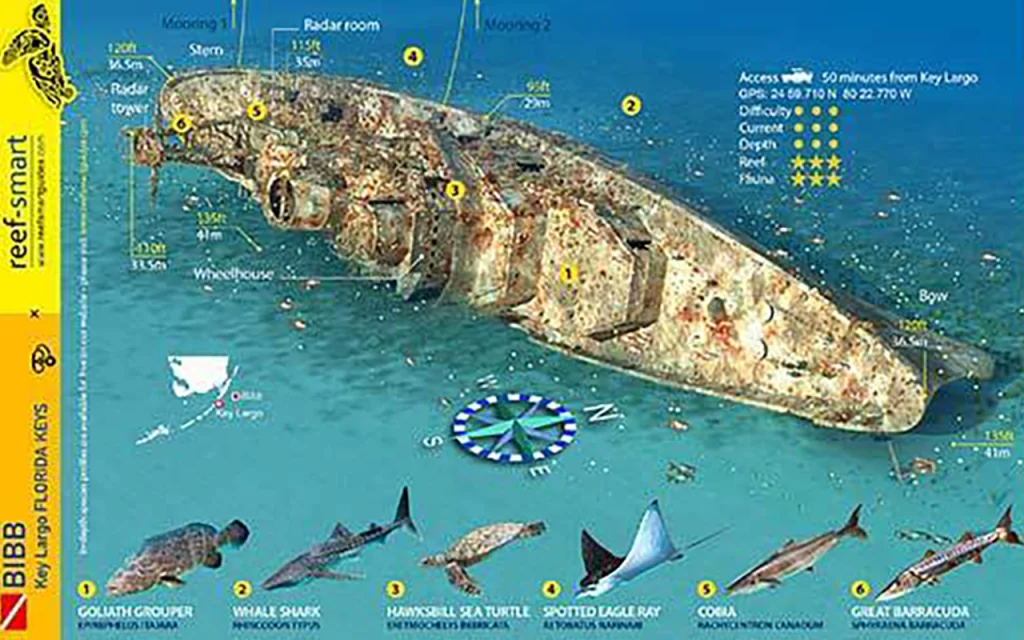
What Do Scuba Divers Say About This Ship
- Challenging dive site: The Bibb is considered a premier but challenging dive site in the Florida Keys, suitable only for experienced divers with advanced certification. The wreck’s depth and strong currents make it a complex dive.
- Depth and position: The ship rests on its starboard side at a depth of 130 feet (40 meters), with the port gunnel railing at 95 feet (29 meters). This depth and position contribute to the site’s difficulty.
- Excellent marine life: Despite the challenging conditions, divers report excellent marine life around the wreck. They encounter a variety of fish species, including grouper, goliath grouper, amberjack, cobia, shark, snapper, barracuda, rays, and sea turtles.
- Pristine condition: Due to limited diver traffic compared to other sites, the Bibb has retained a relatively pristine condition.This makes it an attractive destination for those seeking a less disturbed wreck site.
- Visibility: Divers report good visibility, ranging from 30 to 80 feet, with potential for up to 200 feet of visibility in ideal conditions.
- Comparison to USCG Duane: Many divers compare the Bibb to its sister ship, the USCG Duane, which lies nearby in shallower water. The Duane is generally considered more accessible, leading some divers to choose it over the Bibb.
- Historical significance: Divers appreciate the wreck’s history, including its service in World War II and its role in saving over 600 lives during its career.
- Technical aspects: Some divers note that the Bibb’s depth puts it close to the threshold of technical diving, adding to its appeal for advanced divers seeking a challenging experience.
What Kind of Marine Life Can Be Found on The Ship
- Large predators:
- Bull sharks: The wreck is known to have at least two resident bull sharks
- Great barracuda: Sometimes seen in schools of over 50 individuals
- Schooling fish:
- Atlantic spadefish: Huge schools are frequently observed around the wreck
- Amberjack
- Reef fish:
- Various species of reef fish have made the coral-crusted wreck their home
- Other marine life mentioned by divers:
- Grouper (including goliath grouper)
- Cobia
- Snapper
- Rays
- Sea turtles
The abundance and diversity of marine life on the Bibb can be attributed to several factors:
- The wreck’s structure provides an excellent habitat for various marine species
- Its location near the Gulf Stream brings in nutrient-rich waters, supporting a thriving ecosystem
- The relatively limited number of divers visiting the site has helped maintain its pristine condition, making it an attractive environment for marine life
It’s worth noting that the presence of large predators like bull sharks and schools of barracuda adds to the excitement of diving this site, but also underscores the need for caution and experience when exploring the USCG Bibb wreck.
Key Information
| Feature | Details |
|---|---|
| Location | Key Largo, Florida |
| Coordinates | 24° 59.710′ N, 80° 22.770′ W |
| Depth | Approximately 130 feet (40 meters) |
| Orientation | Rests on its starboard side |
| Historical Significance | Commissioned in 1937, served in WWII, decommissioned in 1985 |
| Sinking Date | Intentionally sunk on November 28, 1987 |
| Marine Life | Bull sharks, barracuda, grouper, cobia, sea turtles |
| Diving Conditions | Strong currents; recommended for advanced divers only |
| Safety Measures | Advanced certification required, safety stops, descent/ascent along anchor line |
| Popular Features | Crow’s nest with Jolly Roger flag, propellers, intact structure |
What Makes USCG Bibb a Unique Diving Experience
Historical Significance
- Rich History: Built in 1937, the USCG Bibb served in various capacities, including patrolling the Grand Banks and participating in World War II. It was involved in notable events such as rescuing survivors from torpedoed ships and participating in the Atlantic Weather Patrol.
- Artificial Reef: The Bibb was intentionally sunk in 1987 to create an artificial reef, adding to its historical and ecological value.
Diving Challenges
- Depth: The Bibb rests on its starboard side at a depth of 130 feet (40 meters), with the port gunnel railing at 95 feet (29 meters). This depth is beyond the limit for novice divers and requires advanced certification.
- Strong Currents: The site is known for extremely strong currents, making the descent challenging. Divers often feel like “flags blowing in the wind” during their descent on the stern or bow lines.
- Entanglement Hazards: Numerous wires and cables still present on the vessel can pose entanglement risks, especially in strong currents. This makes penetration dives particularly hazardous.
Marine Life and Visibility
- Diverse Marine Life: The Bibb hosts a variety of marine species, including bull sharks, barracuda, Atlantic spadefish, grouper, cobia, snapper, rays, and sea turtles. The wreck’s structure provides an excellent habitat for these species.
- Pristine Condition: Due to limited diver traffic, the Bibb has retained a relatively pristine condition, making it an attractive site for those seeking less disturbed wrecks.
Comparison with USCG Duane
- Less Traffic: The Bibb sees fewer divers compared to its sister ship, the USCG Duane, which lies in shallower water and is more accessible. This contributes to the Bibb’s well-preserved state.
- Unique Features: The Bibb’s position on its side and the presence of a Jolly Roger flag at the end of the crow’s nest make it a unique and photogenic dive site.
Overall Experience
- Advanced Dive Site: The Bibb is recommended for experienced divers with advanced open water certification due to its depth, strong currents, and potential entanglement hazards.
- Exceptional Visibility: Divers report excellent visibility, often ranging from 30 to 80 feet, with potential for up to 200 feet in ideal conditions.
How Does The USCG Bibb Compare to Other Shipwrecks in Florida
- Depth and Difficulty: The Bibb lies at a greater depth (130 feet) than many other popular wrecks, making it more challenging and suitable only for advanced divers. This sets it apart from shallower, more accessible wrecks.
- Pristine Condition: Due to limited diver traffic, the Bibb has maintained a relatively pristine condition compared to more frequently visited wrecks. This offers divers a more authentic and well-preserved wreck experience.
- Strong Currents: The Bibb is known for extremely strong currents, which can make it undiveable at times. This adds an extra layer of challenge and excitement not found at all wreck sites.
- Marine Life: The Bibb hosts diverse marine life, including resident bull sharks, large schools of barracuda, and Atlantic spadefish. While other wrecks also attract marine life, the Bibb’s specific ecosystem is noteworthy.
- Historical Significance: As a Treasury-class Coast Guard cutter with service in World War II, the Bibb has a rich history that adds depth to the diving experience.
- Unique Position: The Bibb lies on its starboard side, unlike many other wrecks that sit upright. This orientation provides a different perspective for divers.
- Less Crowded: Compared to its sister ship, the USCG Duane, and other popular wrecks, the Bibb sees fewer divers due to its challenging conditions. This offers a more exclusive diving experience.
- Photogenic Features: The Jolly Roger flag at the end of the crow’s nest is a unique feature that makes for great underwater photography opportunities.
What is The Full History of This Ship
- Construction and Commissioning:
- Built at the Charleston Navy Yard, South Carolina
- Laid down on August 15, 1935
- Launched on January 14, 1937
- Commissioned on March 10, 1937
- Named after George M. Bibb, U.S. Secretary of the Treasury
- Pre-World War II Service:
- 1938: Made a special practice cruise with Coast Guard Academy cadets
- 1939: Spent three months on temporary duty with the Navy, engaging in joint maneuvers
- Late 1939: Joined a destroyer squadron to assist shipping in the North Atlantic
- Winter 1939: Participated in the Grand Banks Patrol
- Early 1940s:
- January 1940: Assigned to weather station duty in the mid-Atlantic
- 1940-1941: Spent much time on weather patrol
- Mid-1941: Anti-submarine weaponry added
- September 11, 1941: Became eligible for transfer to the Navy
- World War II Service:
- Served as a convoy escort in the Battle of the Atlantic
- February 1943: Rescued 202 men from the torpedoed SS Henry R. Mallory
- 1944: Provided convoy escort between the United States and North Africa
- January 1945: Converted to an amphibious command and control vessel (AGC)
- April-June 1945: Served in the Pacific theater, including operations at Okinawa
- Credited with destroying one Japanese kamikaze aircraft
- Post-War Service:
- Continued ocean station duties, providing weather information and serving as a beacon for trans-Atlantic traffic
- October 1947: Participated in the rescue of the Bermuda Sky Queen
- 1960s: Served during the Vietnam War, including transporting John Kerry after he was wounded
- Later Career:
- 1970s-1980s: Involved in drug interdiction efforts
- July 1982: Seized the Danish ship Grimurkamban with 60 tons of marijuana
- July 1982: Seized the Rio Panuco with 50 tons of marijuana
- August 1982: Seized the fishing vessel Shanti
- November 1984: Seized the Turkish ship Captain Joe with over 11 tons of marijuana
- Decommissioning and Final Fate:
- Decommissioned on September 30, 1985
- Remained docked in Miami, Florida
- November 28, 1987: Intentionally sunk as an artificial reef off Key Largo, Florida
- Current Status:
- Rests on its starboard side at a depth of about 130 feet (40 meters)
- Located at coordinates 24°59.71′N 80°22.77′W
- Serves as a popular, challenging dive site for experienced scuba divers
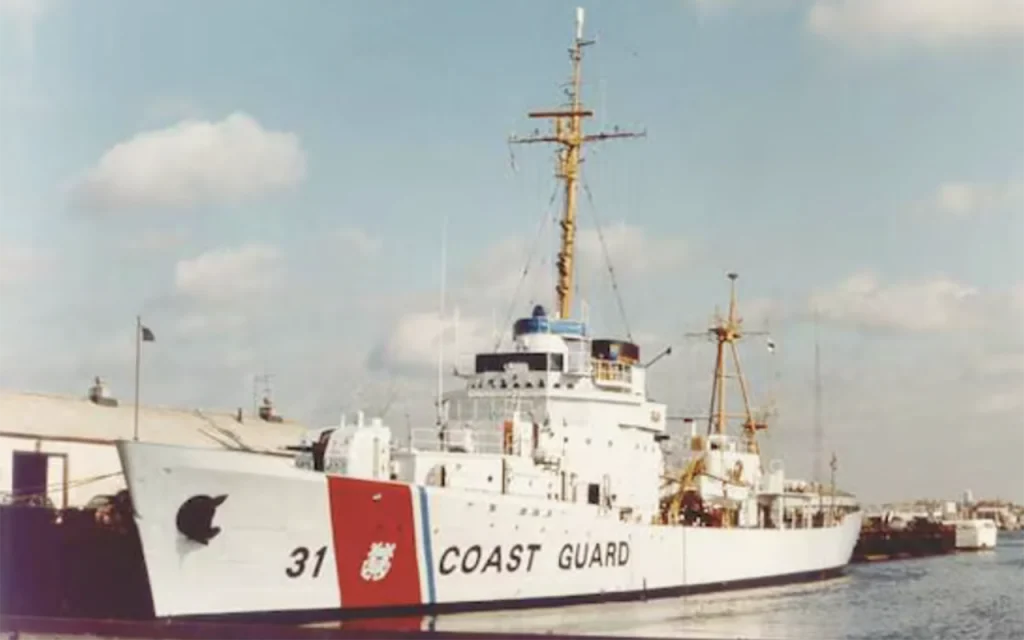
What Historical Features Can Still Be Identified on The USCG Bibb Wreck
- Ship’s structure: The Bibb rests on its starboard side, allowing divers to observe its overall hull shape and structure, which is characteristic of a Treasury-class Coast Guard cutter.
- Propellers: The propellers are described as a “must-see” feature of the wreck, likely still intact and visible to divers.
- Crow’s nest: The crow’s nest is specifically mentioned as stretching away from the wreck, providing a distinctive visual feature. It’s notable for having a Jolly Roger flag at its end, which has become a popular spot for underwater photography.
- Bow and stern: The wreck’s orientation is described with the bow, crow’s nest, and fantail (stern) to the North, indicating these major structural elements are still identifiable.
- Deck features: While not explicitly mentioned, it’s likely that various deck features such as railings, hatches, and possibly some equipment are still visible, given the wreck’s relatively pristine condition due to limited diver traffic.
- Internal spaces: Although penetration dives are considered hazardous due to entanglement risks from wires and cables, the presence of these internal elements suggests that some of the ship’s compartments and corridors may still be identifiable.
- Gun emplacements: Given the Bibb’s service in World War II and Vietnam, it’s possible that remnants of gun emplacements or other military equipment may still be visible on the wreck.
- Navigation equipment: Elements of the ship’s bridge and navigation equipment might still be identifiable, considering the Bibb’s long service in ocean station duties and weather patrols.
What Safety Measures Are in Place for Divers Visiting the USCG Bibb
- Certification requirements: The wreck is restricted to divers with advanced certification due to its depth and challenging conditions. It’s not suitable for novice or intermediate divers.
- Mandatory safety stop: A 15-foot safety stop is mandatory for all divers visiting the Bibb.
- Descent and ascent procedures: Divers are required to always descend and ascend along the anchor line to avoid being swept away by the strong currents.
- Dive planning: Due to the depth (130 feet) and strong currents, proper dive planning is essential. This likely includes calculating bottom time, gas consumption, and decompression requirements.
- Equipment requirements: Given the advanced nature of the dive, appropriate equipment for deep diving is necessary, including redundant air sources and dive computers.
- Dive briefings: Dive operators likely provide thorough briefings on the site’s conditions, potential hazards, and emergency procedures before the dive.
- Restricted penetration: Due to entanglement hazards from wires and cables, as well as the ship’s position on its side, penetration dives are generally not recommended or are heavily restricted.
- Current checks: Given the strong currents at the site, dive operators likely assess current conditions before allowing divers to enter the water.
- Buddy system: As with most dives, a buddy system is likely enforced to ensure divers can assist each other in case of emergencies.
- Surface support: Dive boats typically remain on site to provide surface support and assist with any emergencies.
Dive Shops That Prove Diving Trips to This Shipwreck
- Rainbow Reef Dive Center
- Address: 100 Ocean Dr, Key Largo, FL 33037
- Rating: 4.5 (834 reviews)
- ScubaTech Key Largo
- Address: 99101 Overseas Hwy, Key Largo, FL 33037
- Rating: 4.9 (33 reviews)
- Key Largo Scuba Diving
- Address: 102900 Overseas Hwy #6, Key Largo, FL 33037
- Rating: 4.6 (65 reviews)
- SunSports Charter and Scuba of Key Largo
- Address: 51 Garden Cove Dr Suite B, Key Largo, FL 33037
- Rating: 4.7 (70 reviews)
- Key Largo Wrecks
- Address: 106000 Overseas Hwy, Key Largo, FL 33037

